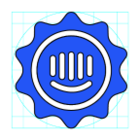I am looking to add Product Tours to some of my 'Manage Bookings' pages, the issue is that the Product Tour wouldn't be of any use if the user hasn't yet got any bookings (when they open the page for the first time and the product tour runs).
I'm looking for a way to only trigger the product tour when the user has their first booking, which can be seen on the 'Manage Bookings' page. At the moment the only rules you can add to trigger the Product Tour are based on the page URL, which isn't great as our site doesn't use the URL to distinguish whether the user has any bookings on the page.
Is there a way to trigger the product tour when a certain CSS element appears on the page, or maybe a particular ID?





